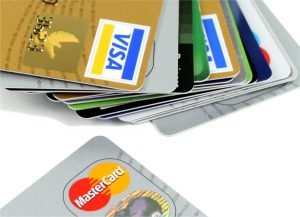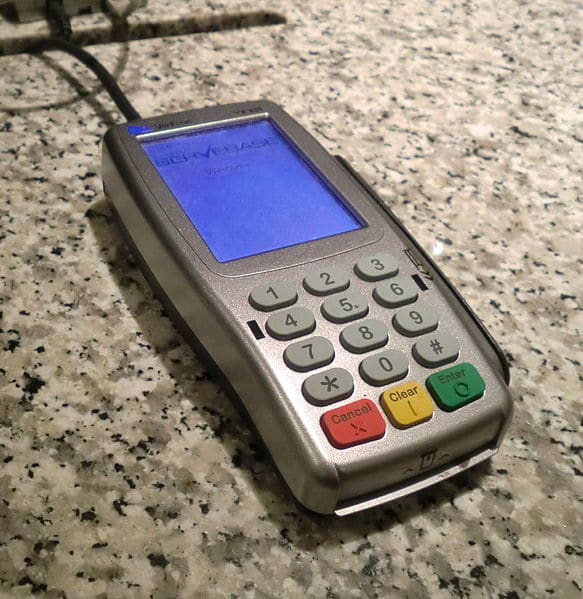Chargebacks 101: How to Prevent, Avoid, and Dispute Them
Last Updated on April 21, 2020 by
Chargebacks are the bane of every retail merchant’s existence. They represent an unhappy customer, a problem with their purchase, and most importantly, lost revenue. To add insult to injury, chargebacks can also be the result of fraud, which for some merchants, like restaurants, also means a double hit: not only the lost revenue, but the cost of the ingredients and labor to make the meal.
What are chargebacks? How do you prevent them? How can you avoid them? And when they happen — when, not if — how do you dispute them?
Let’s start with a couple basics. First, there are two types of chargebacks you’ll encounter
- Chargebacks: This is where a transaction has been reversed and shows up on your account as a debit.
- Retrieval Request: A cardholder or acquiring bank questions a transaction and requests a copy of the sales draft.

How do you prevent chargebacks that you can control?
There are a few reasons chargebacks occur in the first place: Fraud, a problem with product quality, a problem with customer service, or problems with refunds or processing.
Some of these problems are within your power to prevent, like making sure there’s nothing wrong with your product, making sure your employees are trained in how to provide top-notch customer service, and processing the necessary refunds in a timely manner. Customers may also have problems with their orders being lost, receiving the wrong items, or they were charged more than once. These are problems you can avoid with staff training.
You can reduce the number of chargebacks just by streamlining and improving some of your processes, providing additional training for your staff, and make sure that refunds and returns are handled properly.
Finally, an entire chargeback cycle can take as long as 20 – 30 days, but as a merchant, you only have 5 business days to file the necessary paperwork and documentation to dispute any chargebacks. If you miss that window, you automatically forfeit the right to dispute it. So make sure you keep track of all records of transactions and answer your chargebacks immediately. Don’t wait, because you’ll invariably miss the 5-day window.
When it comes to retrieval requests, they’re a little harder to avoid. Unfortunately, these are often caused by confusing entries on the cardholder’s credit card statement, because the issuing bank uses garbled code in their listings so no one really has any idea of what’s going on. One way you can help this is to have your merchant services account name match your store’s name, and not that of your holding company or another company. A shopper may not know that “Smith & Sons Holdings” is the owner of “Cool Beans Coffee.”
How do you avoid chargebacks outside your control?
The other possible chargebacks that you can’t control are problems with fraud and processing issues.
For example, fraud can mean anything from a stolen credit card being used to purchase goods from your store, or even what has been called friendly fraud.
Friendly fraud is where, for example, someone orders food from a restaurant, has it delivered, and then issues a chargeback claiming there was something wrong with the order. There are even a growing number of cases where a group of young people will gather nightly or weekly and take turns “buying” dinner, issuing chargebacks each time. It can happen several times before the restaurant owner discovers the pattern and manages to stop it.
You can avoid these types of chargebacks by requiring all in-store credit card buyers to show ID when they make a purchase, so you can be sure the holder of the card is actually the owner. To help avoid friendly fraud, you can start tracking consumer behavior patterns to spot outbreaks of chargeback fraud. There are also tools like Friendly Fraud Solutions from Kount, or you can take advantage of the Visa Merchant Purchase Inquiry which allows the issuing bank to push back when a customer calls with a chargeback. This way, the bank can verify the information such as the account number, address, etc.
You can also fight friendly fraud by confirming all orders with your pick-up and delivery customers and offering to fix errors or even provide your own refunds if customers call and complain that something was wrong with their order. That may hurt your revenue, but at least you won’t be dinged with a chargeback.
How do you dispute chargebacks?
When you receive your chargeback notifications — you can either receive daily email summaries of your credit card activity from your merchant services provider or log into the web portal to see them — you’ll need to provide several documents to “tell your side of the story.”
You’ll receive a document that shows the cardholder’s information as well as the product or service they purchased from you. And you’ll want to provide documentation that the product or service was delivered as promised. This could be an acceptance of terms and conditions, an invoice, a packing slip, proof of delivery, proof of usage, or even proof of a refund. If you have any additional communication as well, like an email chain or social media discussion, that will also help.
There may be additional steps you have to take, or additional documentation that’s required, depending on your issuing bank and the credit card network. For example, Visa has their Visa Claims Resolution (VCR) where some automated checks are made before a chargeback can be started, such as whether the chargeback is made within the allowable timeframe, if there was already a refund, or if the transaction occurred after a fraud notification.
The VCR also allows for pre-arbitration where the merchant, customer, and acquiring bank manage the chargeback process. But if that doesn’t work, or if either party waives pre-arbitration, then the Visa Arbitration Committee will make the final decision.
Unfortunately, chargebacks are not 100% avoidable. There will always be a chargeback or two that slips past even your best efforts. But if you can take the necessary steps to prevent them — improve your fulfillment and delivery processes, keep all documentation, and answer chargebacks within the 5-day response window — you can greatly reduce the number you have to deal with as well as the number you might lose.
Some industries and businesses are more prone to chargebacks than regular retailers, such as CBD dispensaries, subscription services, or adult entertainment, which makes it harder to find a merchant services provider. Corepay can help you so you can process your payments quickly and easily. For more information, please visit our website or call us at (800) 408-0095.
Photo credit: Nick Youngson (PicPedia.com, Creative Commons 3.0)
We appreciate you following Corepay’s blog. Let’s collaborate, send us your article suggestions, questions, and/or feedback to: [email protected].




